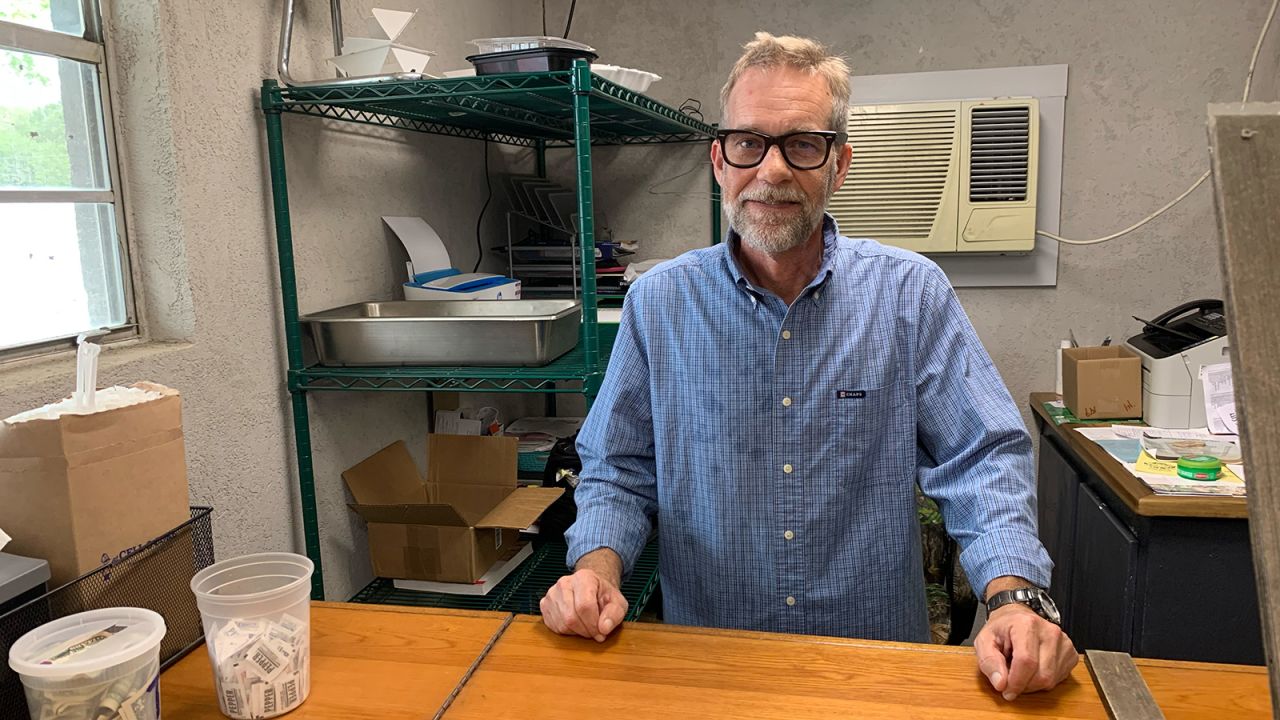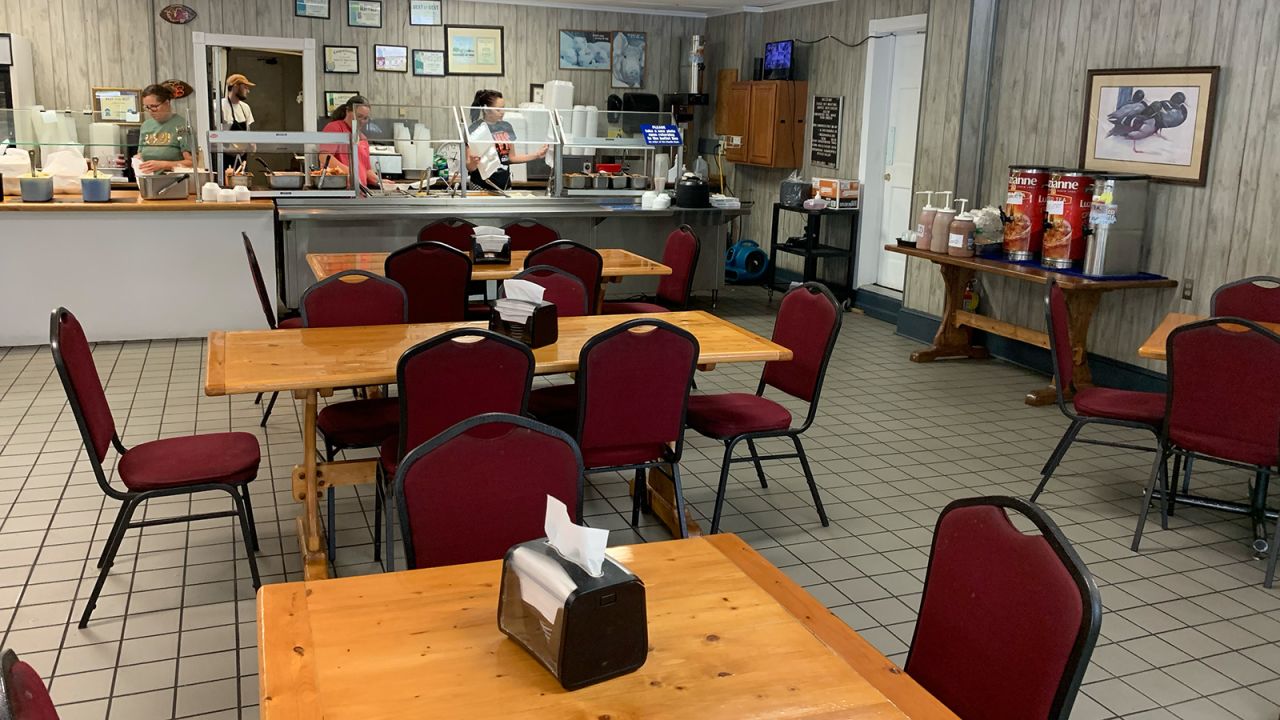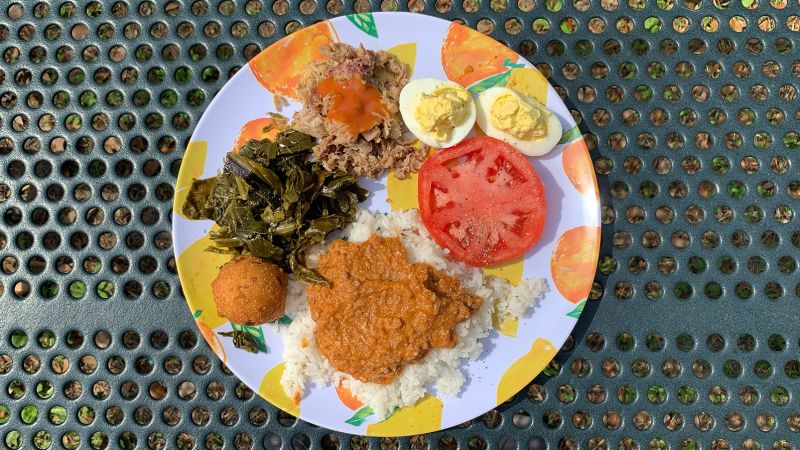CNN
—
Marvin C. Ross was just 8 years old the first time he watched Willis Spells, his neighbor in Dorchester, South Carolina, make barbecue hash.
Relatives and friends showed up to sit outside with Spells as he stirred ground hog’s head meat with something that looked like a boat oar. After a night of simmering and hours of stirring and mixing spices, young Marvin finally tasted what everybody had come to enjoy – and what he now knows is a state culinary invention.
“People came from all over to eat that hash,” Ross, 39, recalled decades later.
And they still come to eat the state’s special dish, a sort of meat gravy made from hog meat. It’s generally served over plain white rice and seldom found outside South Carolina’s borders.
“It’s one of those wonderful regional delicacies,” said Robert F. Moss, contributing barbecue editor for Southern Living magazine and the author of “Barbecue: The History of an American Institution.”
But it’s not universally loved, said Jim Wellman, president of the South Carolina Barbeque Association.
“It’s an acquired taste. Not everyone likes it,” he said.
People in South Carolina take hash very seriously.
“A lot of people judge barbecue restaurants by their hash,” said Debbie Bessinger, who calls herself “a barbecue wife.” She’s office manager at Melvin’s Legendary Barbecue, with locations on James Island and in Mount Pleasant, South Carolina, both near Charleston.
“I did not grow up eating hash because I grew up in North Carolina; we had Brunswick stew.”
Most people eat hash as a side with barbecue. But they may also eat it as a main dish, pouring spoonsful over rice, grits, potatoes, toast or even other meat.
Moss said hash originated before the Civil War in the counties on either side of the Savannah River, which forms the border between Georgia and South Carolina. It’s difficult to pinpoint which group of people created it, he said.
“It turned up in one WPA slave narrative of a woman who remembered growing up in Georgia,” said Moss.
On his website, Moss writes: “Estella Jones, who was born enslaved on Powers Pond Place near Augusta, recalled that when she was a child, some of the men would occasionally steal hogs from other plantations and ‘cook hash and rice and serve barbecue.’ ”
Spells, who was Marvin Ross’ hash mentor, remembers older people calling the dish “slave hash, but I never called it that,” he said.
Howard Conyers, a pitmaster and self-described “guardian of barbecue history and culture,” said that “what has been written over the years is not totally accurate. You didn’t get the voice of the people doing the cooking. What we know mostly about tradition from those people, we only have oral history.”
Conyers, a transplanted South Carolinian who now lives in New Orleans, also mentors Ross through the Kingsford Preserve the Pit program, which is committed to preserving and celebrating Black barbecue culture. On its website, Kingsford notes: “The Black community ignited American barbecue more than 350 years ago…”
‘There are a thousand recipes’

One thing everyone seems to agree on is that barbecue hash sprung from the need by poor people to have something to eat and to waste nothing.
“We define hash as what’s left from the pig. I’ve known people who use primarily organs, the liver — but never known them to use the heart. It’s pretty much meat you don’t want to barbecue,” Wellman said.
“There are a thousand recipes. Funny thing, though, is they all come out looking and tasting the same,” he said, laughing. “I think they have a basic starting point and then they let whimsy take over and put in whatever they want.”
But Spells and Ross say they still make hash the way Spells’ father did — only using the hog’s head.
Ross, a fifth-generation farmer, and his wife are owners of Peculiar Pig Farm and Peculiar Pig Eats in Dorchester County. They regularly hold large, ticketed public events where Spells, now 71, and Ross make their hash and visitors from around the country come for cooking demonstrations, tours of the farm and sit-down meals that include hash.
“We get a lot of people moving from the North who come and they ask, ‘What is this?’ ’’ Ross said, referring to questions about his hash. “I say, ‘meat gravy.’ ”
A very polite, soft-spoken guy, he figures that when they ask just before the meal isn’t the best time to tell them they’re about to eat ground up hog’s head.
“I know a restaurant two towns over where people are making it from butts,” offered Ross, slightly disgusted. “The head is very underestimated.”
Ross said he and Spells boil down the grounded head in one big cast iron pot and stew fresh tomatoes, mustard and seasonings in another pot outside before mixing them together – and stirring.
“It’s a long process,” said Spells. “You grind (the head) up and put the sauce in it,” he chuckles. That’s about all he’ll say about his recipe. “It’s a family secret. … I eat other people’s hash, but they can’t touch mine.”

At Carolina Bar-B-Que in New Ellenton, South Carolina, the hash is tomato based.
“I have people come from Augusta (22 miles away) to eat it,” said owner Thomas Zeigler. “We have a lot of people buying bottles of hash to take to North Carolina, Tennessee and Florida because they can’t find it where they live. It’s very freezable.”
Zeigler sells a gallon for $33.50; quarts for $9.
“As far as plate-wise, we probably do 500 to 600 plates a day,” said Zeigler, whose restaurant is open three and a half days a week.
His recipe? “You’re not going to get that info out of me,” he said, laughing. “Once you find a good recipe, you lock it up.”

Most of the restaurants that sell barbecue hash today are decades-old businesses.
“Some of the new people — or the chains– do not make hash because it is a very labor-intensive process,” said Wellman. “You can’t cook it that long in a kitchen.”
Roughly 50% of the barbecue restaurants in South Carolina, “or at least 143 of them, serve hash today,” according to James Roller, BBQ aficionado and publisher of the website Destination BBQ.
Fire stations, churches and other organizations hold annual fundraisers featuring the hash, noted Wellman, who has been assigned to the “hash house” to mix and stir for hours during his Masonic Lodge’s barbecue fundraisers.
Hash may never be a popular South Carolina export, but those who sell it are just fine with it being an in-state fascination.
The line to buy hash was a football field long at March’s Charleston Wine & Food Festival, said Bessinger of Melvin’s.
“It’s such a regional dish, we didn’t know how people from all over would receive it. But people came and said, ‘We heard we should try the hash.’ ”
In most accounts from the past, it is men who cooked the hash. Even today, it seems there are more men than women in the kitchen or out back stirring the oversized hash pots.
“Based upon what I’ve seen (including photographs from the 19th and 20th centuries), hash-making was predominantly something men did, like barbecuing itself,” said Moss, the Southern food and cultural writer.
“I think the fact that it was outdoors and fairly labor-intensive, was definitely a factor, and most forms of large-scale outdoor cooking over fires tended to be classified as men’s activities back then. “
Conyers said he grew up with the men in his family slaughtering the hogs and remembers them giving the “head, liver and lights” (lungs) to my aunt to make hash. My mom made it on occasion, but my aunt in Paxville, South Carolina, made it better,” he recalled.
“We would quarter the head so it wouldn’t be too big to put in a pot so my aunt could put it in the pressure cooker for an hour or two instead of boiling it outside all night,” said Conyers.
Ross views his hash-making as part of preserving history and culture.
His son, 5, watches him the way a young Ross used to watch Spells. But he admits, “My two daughters prefer cooking inside.”
Patrice Gaines is an author, freelance writer and former Washington Post reporter. She lives in Lake Wylie, South Carolina.




























